Do you ever get confused as to which is port and which is starboard? Maybe you know them already, but you don’t know their history.
It’s not essential that you know the difference between port and starboard before you cruise, but it’s still one of those things that’s just handy to remember sometimes.
So, let’s find out what they mean, how to remember which side is which, and where the names came from.
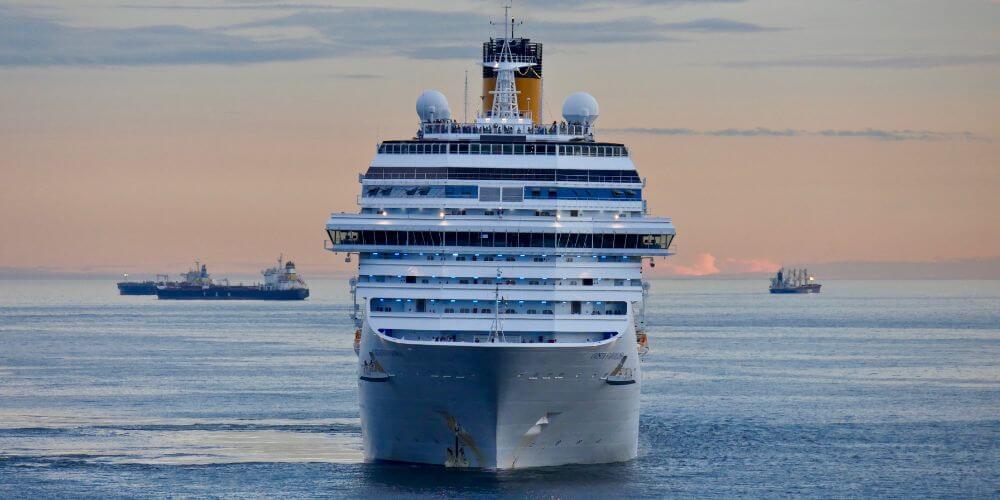
- What Does Port And Starboard Mean?
- Which Side Is Port And Which Is Starboard?
- Are Port or Starboard Cains Better On A Cruise?
- Why Is Port Left And Starboard Right?
- Why Is It Called Starboard?
- Do Ships Always Dock On The Port Side?
- What Colours Are Associated With Port And Starboard?
- Why Is Starboard Green And Port Red?
- What Are The Four Sides Of A Ship Called?
- How To Remember Port & Starboard
Port and Starboard meanings explained
Port and Starboard refer to the left and right sides of a ship respectively. They are used because they are always a fixed position, which helps mariners to communicate without any confusion or ambiguity – port and starboard will always be the same direction.
Imagine if you were trying to navigate using left and right during an emergency situation. It would be very easy to be facing the wrong direction, or to cause confusion if telling your crew to steer to the right of another ship.
I know for sure that when I get up to leave the buffet, I never know which way is the front of the ship!
By using fixed terms that never deviate, it is much easier to understand where to steer, or where an issue may be on the ship.
Which side is which
When facing the bow (front) of the ship, port is on the left and starboard is on the right. These positions do not change – they are fixed. So, if you were facing the aft (rear) of the ship, port would be on the right and starboard on the left.
Is Port left or right?
- Port = Left (but only when you’re facing towards the front of the ship)
- Starboard = Right (again, when facing towards the front of the ship)
On a cruise ship, there’s not really any difference since most venues run across the width of the ship. While some ships are huge, it never takes long to walk from the port to the starboard side.
It’s just useful to know which side of the ship your muster station is on so that if there were an emergency you would have no trouble finding your way there.
Some cruise lines, like Carnival, will keep all even-number cabins on the port side and all odd-numbered cabins on the starboard side. While that’s in keeping with maritime tradition in naval vessels, it’s not universal across all cruise lines, but it can be handy for understanding which side of the ship you’ll be sailing on.
On Virgin Voyages ships, one side has the A cabins and one side has the B cabins, to make it a little easier to remember which way to head when you leave the elevator.
Port or Starboard – which is better for your cruise?
On most cruise itineraries it won’t really matter whether your cabin is on the port or starboard side. The difference would be if your cruise was one-way, where you would always be facing a similar direction. In that case, you can work out whether you’d prefer a port or starboard room depending on your sailing direction.
If you’re sailing in a northerly direction and you want to enjoy the sunset from your balcony, make sure your cabin is on the port side, otherwise, instead, you’ll get the sunrise.
And if you’re sailing to the south, then sunset will be on the starboard side to the west, and sunrise to the east on the port side.
When considering port vs starboard for your cruise, it really doesn’t matter. What does matter though, is what deck to choose.
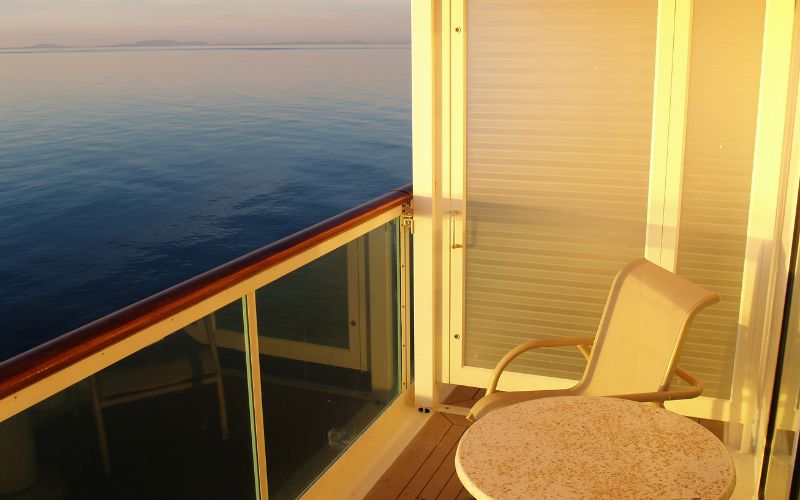
Reasoning behind the definitions
The terms starboard and port date back hundreds of years to Old English. Starboard comes from the word ‘steorbord‘, which was the side of the ship that it was steered from, since most people are right-handed. Ships would then dock on the left side, hence port.
Ships didn’t used to have a central rudder but instead had one large steering oar. Because 90% of people are right-handed, it made sense for this oar to be on the right-hand side. That’s why the steorboard side was the right side – it was the side of the ship where it would be steered from.
It’s important that all ships use the same terminology to avoid any confusion, so when the regulations around international ship navigation were formalised it was written into law that port would always be left and starboard would be right, based on these Old English names.
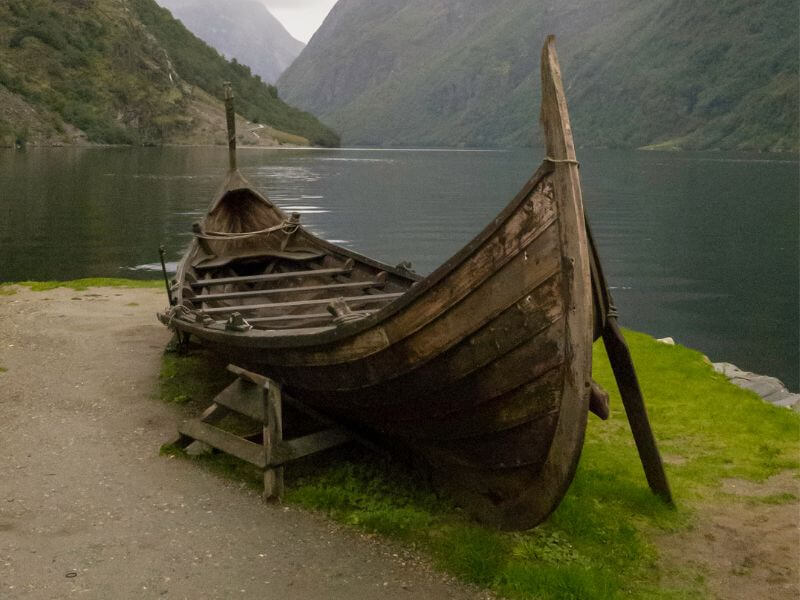
History of “starboard”
The term ‘starboard’ comes from the Old English ‘steorbord’, which is an amalgamation of ‘steor’, which meant to ‘steer’, and ‘bord’ which was a word meaning the side of a boat. As old boats were steered from the right-hand side, it was named steorbord, which ultimately became starboard.
Port wasn’t always known as port though. It also had Old English origins as ‘larboard‘ – from ‘lar’ meaning to ‘load’. As ships grew larger, they would normally be easier to dock on the left side while steering from the right, so that became the loading side of the ship.
Over time though, larboard and starboard were recognised as being too similar which could be confusing, so it was simplified to port, since it essentially meant the same thing.
Docking side
When ships were steered manually, they would generally always be docked on the port side, hence the original name ‘larboard’ (loading side), and then port. Nowadays ships can dock on either side, depending on the port layout and regulations on how ships are arranged on a pier.
Cruise ships will have docking facilities on both port and starboard sides, and often it’s up to the captain as to which way to dock based on their direction of approach and sailing direction once they set sail, among the layout and regulations mentioned above.
On cruises to Norway, you’ll probably find that your ship alternates between port and starboard docking for the different destinations.
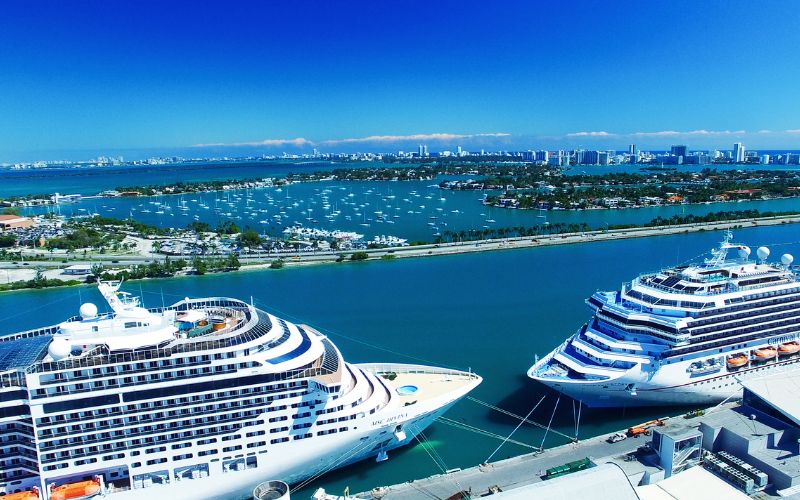
Colours associated with port and starboard
The colour red is associated with port, and the colour green is associated with starboard. Ships must display a red light on their port side and a green light on their starboard side, so that passing ships can safely navigate around them.
Port & Starboard colours
- Port = Red
- Starboard = Green
These lights never change, in the same way as the names don’t. That way, if you see a ship in the distance you can instantly tell which direction it is sailing in without any ambiguity. There’s also a regulation that ships must have a white light on the stern/aft of the ship.
The same lights are used on aeroplanes too – a red light on the left side and a green light on the right.
On ships, the lights are also positioned at a certain angle, which just helps other crews to easily identify the direction that the ship is sailing in. They need to be visible from 2 miles away as well, so ships have plenty of time to react.
An easy way to remember that port is red and starboard is green is to remember that port wine is red. If you think of the question ‘Is there any port wine left in the bottle?’, then you’ll remember that port is red and also left.
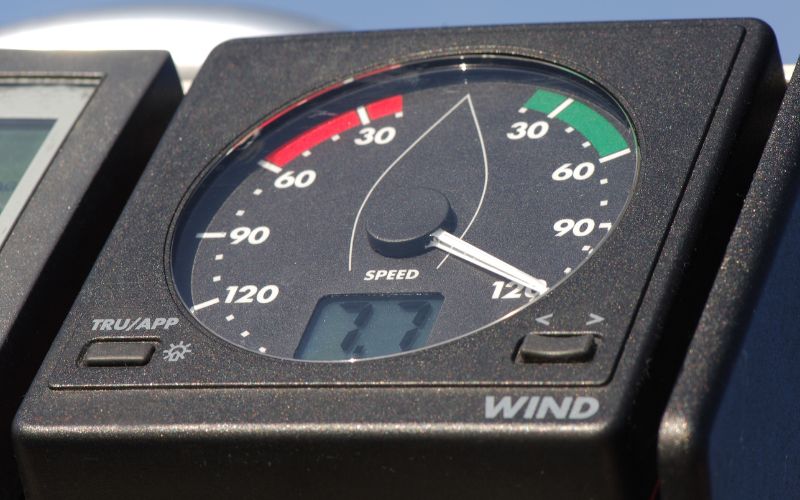
Reasoning behind the colours
It’s believed that starboard was assigned a green light because it was traditionally the safer side of the ship – the helmsman would have a better view of the right-hand side of his ship when steering using an oar. Port was the more dangerous side, and so red was chosen.
Obviously, this harks back more to sailing tradition when a steering oar was used on the right side of ships, well before green and red lights were introduced.
But that idea that port was more dangerous and starboard was safer was something carried forward. So that’s why red and green were chosen respectively due to their associations with those colours.
It’s worth noting that ships generally used to pass each other on the ‘dangerous’ port side because there wouldn’t be the steerage oar to potentially damage the passing ship. Boats could probably withstand a bump on the port side, but those oars could damage the hull of ships sailing past.
All four sides of a ship named
The left side of the ship is called port and the right side is called starboard. The front of the ship is the bow, while the rear is called the stern. These are all fixed positions and never change regardless of the direction a sailor is facing.
The 4 sides of a ship:
- Left = Port
- Right = Starboard
- Front = Bow
- Back = Stern
The terms bow and stern aren’t as widely used in cruising. Instead, the rear of the ship is known as the ‘aft’ and the front of the ship is known as ‘forward’.
So, your cruise cabin might be forward, mid or aft (or sometimes a combination like ‘mid-fwd’ or ‘mid-aft’ to indicate towards the front or aft).
If you need help remembering ‘bow’ then just think of a bow and arrow, which always fires in a forward direction. So, the bow is the front, since that’s the direction the ship is travelling.
Another option is to think of bowing – when you do, the top half of your body is moving forwards. Therefore, bow = forwards.
Aft is a really easy one to remember – just think of the word ‘after’ and you’ll remember that the water behind the aft is what comes after the ship has moved through it.
Stern is a little trickier. A popular phrase to try and help is that ‘Stern Stan always stands at the back’, so maybe that would help?
How to remember port & starboard
Many people struggle with remembering which is port and which is starboard. It’s a little trickier than remembering ‘bow and stern’ or ‘forward and aft’.
There are loads of little tips and tricks to help you remember which side is port and which is starboard. From clever sayings, to jokes, to even buying specially designed items of clothing there are tonnes of ways you can commit these to memory.
Want to learn how to differentiate starboard vs port yourself before you set sail? Read this next: 9 Easy Ways to Remember Port and Starboard.
Related posts:
- 44 Short Sea Quotes and Sayings
- 23 Mythical Ocean Names To Inspire You
- How Many Cruise Ships Have Sunk?
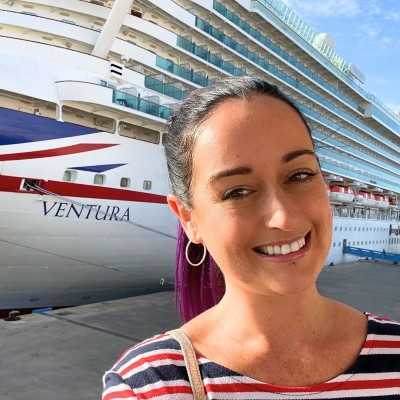
Jenni Fielding is the founder of Cruise Mummy. She has worked in the cruise industry since 2015 and has taken over 30 cruises. Now, she helps over 1 million people per month to plan their perfect cruise holidays.


